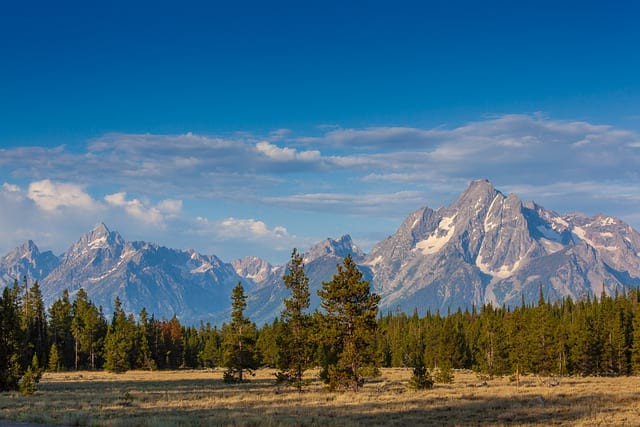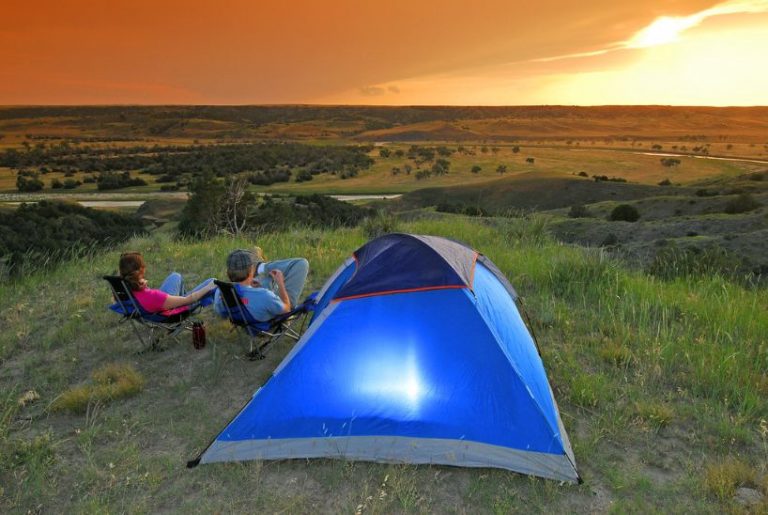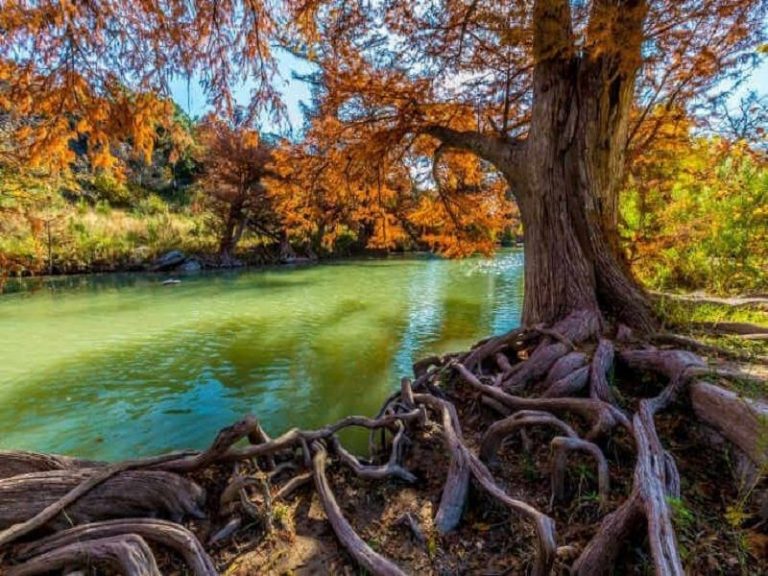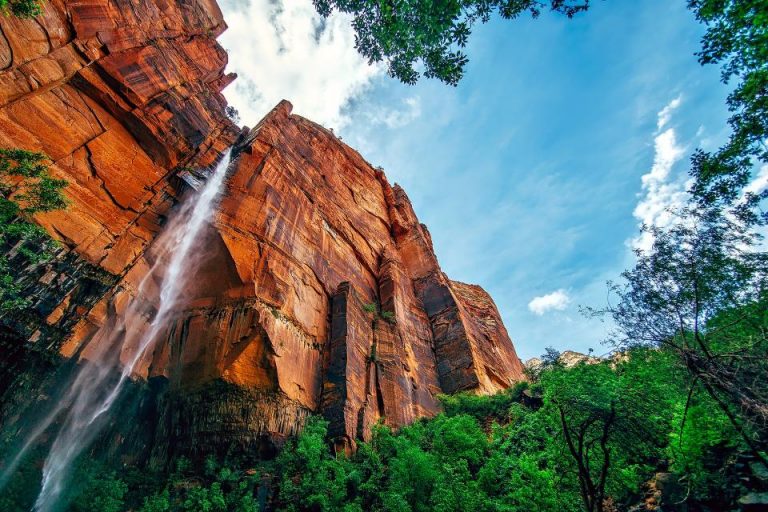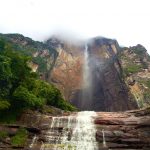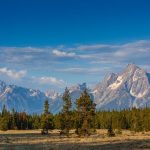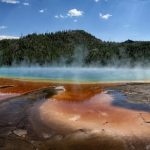Park Info and History
Yellowstone National Park is an American national park, situated largely in Wyoming and stretching into Montana and Idaho.
Yellowstone is believed to be the first national park in the world. Which was established by the United States Congress in 1872. On March 1st, 1872 President Ulysses S. Grant signed into law.
Yellowstone is a national park spanning 2,219,791 acres (8,983 km²) and it encompasses lakes, canyons, rivers, and mountain ranges. Elevation 8,104 ft (2,470 m).
Native Americans have lived in the Yellowstone region for over 11,000 years. Apart from a short period of time when explorers came to visit, European-style exploration didn’t start until much later when people from around the world started coming to America.
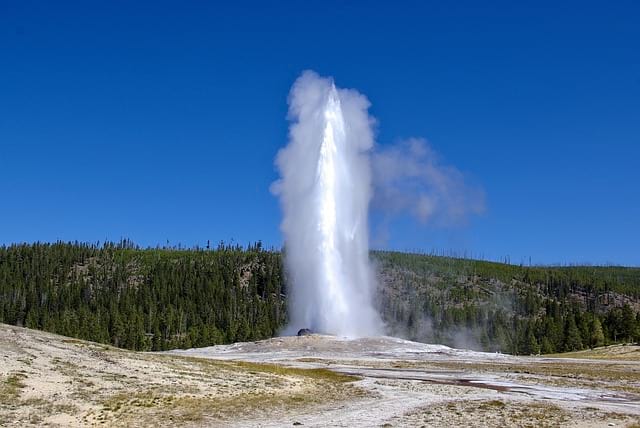

Yellowstone is well-known for all its wildlife, geothermal features, and perhaps most famously, the Old Faithful geyser. Aside from its various biomes, the subalpine forest is widely distributed. One reason for this is because it’s part of the South Central Rockies.
Half of the world’s geothermal features are in Yellowstone. The park is also home to two-thirds of all geysers found on Earth.
Yellowstone is the world’s hotspot for geysers and hydrothermal features. Over half of them can be found here, and this is largely due to the ongoing volcanism that fuels them. Lava spills and volcanic rocks cover most of the land in Yellowstone.
The Park is home to an insanely diverse range of thermal features. We have more than 10,000 stirring springs, steaming fumaroles, and bubbling mudpots – a place like no other.
Yellowstone’s hydrothermal features would not exist without the underlying magma body that releases tremendous heat. They also depend on sources of water, such as from the mountains surrounding the Yellowstone Plateau. There, snow and rain slowly percolate through layers of permeable rock riddled with cracks. Some of this cold water meets hot brine directly heated by the shallow magma body. The water’s temperature rises well above the boiling point but the water remains in a liquid state due to the great pressure and weight of the overlying water. The result is superheated water with temperatures exceeding 400 ° F.
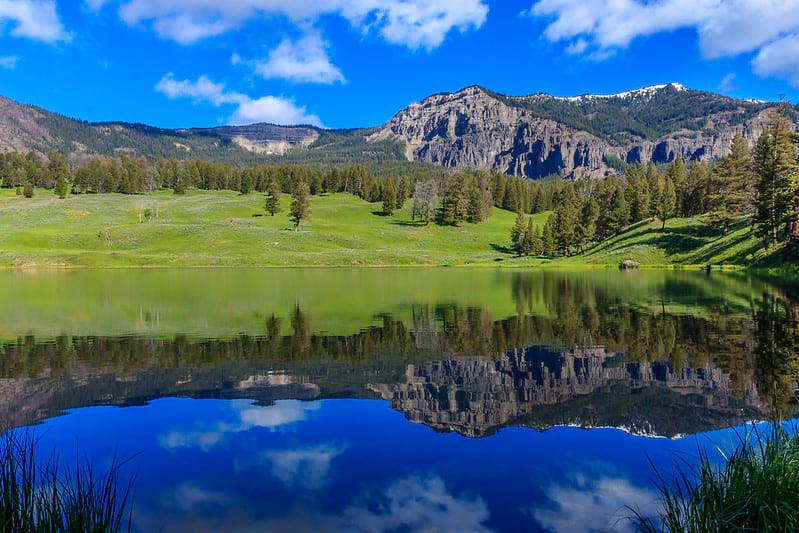

Yellowstone Lake
Yellowstone Lake is home to the largest population of wild-caught cutthroat trout in North America. How a Pacific Ocean fish came to live in a lake that drains to the Atlantic was a mystery for many years.
Scientists have recently found that Yellowstone Lake used to drain to the Pacific through a water outlet in South Lake and the Snake River. And fish would even cross from one ocean to another at Two Ocean Pass.
The Lake Trout, an exotic species, has been introduced illegally and is now found in Yellowstone Lake. It threatens the existence of the native cutthroat trout because of its natural ability to survive. The lake drains into the only outlet near Fishing Bridge which is a huge concern for Yellowstone National Park. Most people consider the rapids at LeHardys to be the northern boundary of Lake Erie. The elevation doesn’t drop until shortly after that point, so it’s no wonder.
What Animals Live In Yellowstone National Park
Yellowstone National Park is one of the most unique natural landscapes in the lower 48 states. It harbors the largest mammal population found across this region, as well as a diverse range of other small animals.
Yellowstone is a prime example of how predator-prey relationships can help keep a natural environment in balance. Yellowstone has eight main animal groups, including bison, bighorn sheep, elk, mountain goats, moose, mule deer, and pronghorn; white-tailed deer also reside in the park. The Park is home to the oldest and largest public bison herd in the nation.
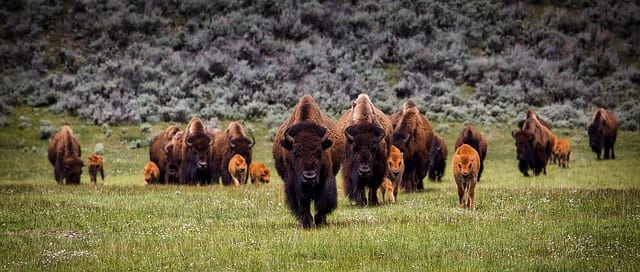

Image by David Mark from Pixabay
Unique fauna can be found throughout the Ridge, including one of the most diverse populations of mammals in North America. There are seven large predators present in our area, including Canada lynx, coyotes, black bears, grizzly bears, mountain lions wolverines, and mountain lions as well as wolves.
The National Park Service wants to maintain the ecological balance that sustains these animals and their habitats while monitoring any changes in their population statistics. Many animals are migratory or seasonal in nature, which means they might cross through the boundaries of the park. When they do this, their different needs become important – not just within the wildlife of the park but also in relation to conservation management practices on public land outside its boundaries.
Is Yellowstone’s Volcano Still Active?
As far as we know, Yellowstone is still very much active. The many hydrothermal features in the park show that there’s still a lot of heat down there and the number of earthquakes also gives away what’s going on. But to be sure, we can take our findings from other studies. One such study is from the University of Utah Seismograph Station which tracks this activity closely.
Focusing on Yellowstone’s recreational opportunities, there are plenty of places to enjoy: hiking, camping, boating, fishing, and sightseeing. The paved roads allow for close access to the geothermal areas and lakes and waterfalls.
In the winter, visitors often access the park through guided tours that either use snowcoaches or snowmobiles.
What Type Of Climate Does Yellowstone National Park Have?
The weather in Yellowstone National Park can be unpredictable. It could go from sunny & warm to cold & rainy within minutes, so it’s important to pack the right clothes that can handle all types of weather.
The summer season in this region is characterized by daytime temperatures usually staying in the 70s (25°C) and sometimes reaching up to the 80s (30°C). Evenings are usually cool, with some freezing temps at higher elevations. Thunderstorms are also prevalent during afternoons.
The winter season means the temperature will likely be around zero to 20°F(-20°C to -5°C) throughout the day. It’s common for sub-zero temperatures to persist overnight. The record low temperature so far is -66F (-54°C). Snowfall can very much depend on the year but tends to average around 30 inches. The average annual snowfall in Buffalo is 150 inches. However, we get more than that on the higher elevations, which is not uncommon and happens quite often.
Fall and Spring: Daytime temperatures range from the 30s to the 60s (0°C to 20°C) with nighttime lows in the teens. Snow is common this time of year and accumulations of up to 12 inches (30cm) can be expected in less than a day during large snowstorms. Be prepared for sudden change, because you never know what may happen throughout the year. Prepare with clothes for all sorts of weather. If you are going to Yellowstone it’s a good idea to pack warm gear and rain gear even if the forecast said that it would be nice that day.
More articles about Visit Yellowstone National Park: 17 Reasons Why You Should
Location
United States

